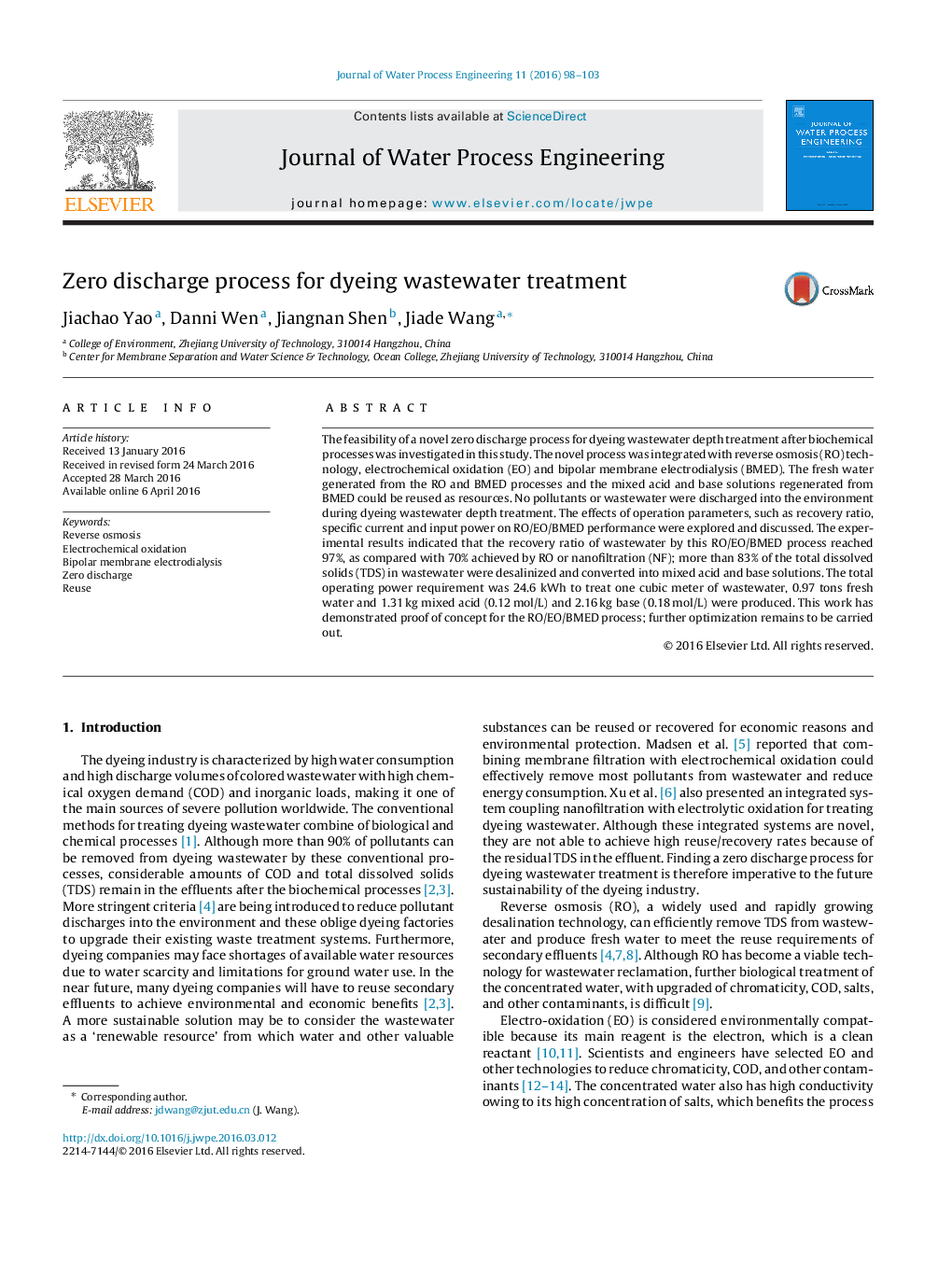| Article ID | Journal | Published Year | Pages | File Type |
|---|---|---|---|---|
| 232434 | Journal of Water Process Engineering | 2016 | 6 Pages |
The feasibility of a novel zero discharge process for dyeing wastewater depth treatment after biochemical processes was investigated in this study. The novel process was integrated with reverse osmosis (RO) technology, electrochemical oxidation (EO) and bipolar membrane electrodialysis (BMED). The fresh water generated from the RO and BMED processes and the mixed acid and base solutions regenerated from BMED could be reused as resources. No pollutants or wastewater were discharged into the environment during dyeing wastewater depth treatment. The effects of operation parameters, such as recovery ratio, specific current and input power on RO/EO/BMED performance were explored and discussed. The experimental results indicated that the recovery ratio of wastewater by this RO/EO/BMED process reached 97%, as compared with 70% achieved by RO or nanofiltration (NF); more than 83% of the total dissolved solids (TDS) in wastewater were desalinized and converted into mixed acid and base solutions. The total operating power requirement was 24.6 kWh to treat one cubic meter of wastewater, 0.97 tons fresh water and 1.31 kg mixed acid (0.12 mol/L) and 2.16 kg base (0.18 mol/L) were produced. This work has demonstrated proof of concept for the RO/EO/BMED process; further optimization remains to be carried out.
